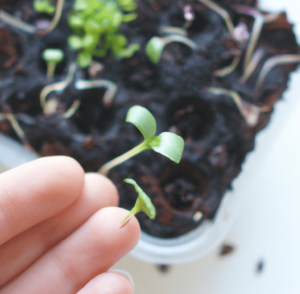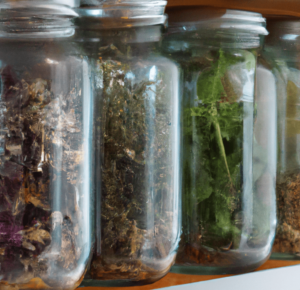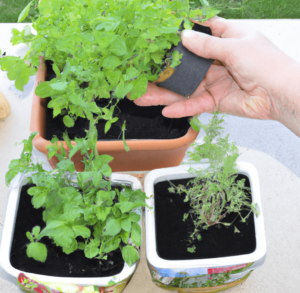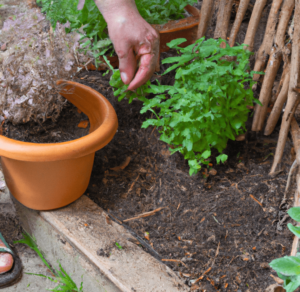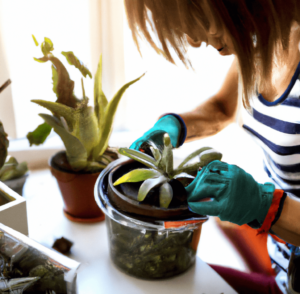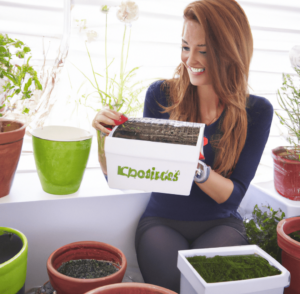Gardening is a popular hobby that allows people to grow their own fruits, vegetables, herbs, and flowers in their own backyard or patio. It’s a rewarding activity that not only provides fresh produce, but also offers numerous benefits such as physical exercise, stress relief, and a connection to nature. However, gardening can also be intimidating for beginners, as it requires a lot of planning and maintenance. That’s where square foot gardening comes in.
Square foot gardening is a method of growing plants in small, highly organized beds, typically in a 4×4 foot area. It’s a great way for beginners to start their gardening journey, as it simplifies the process and allows for efficient use of space. In this article, we’ll dive into the basics of square foot gardening, including how to get started, what to plant, and how to maintain your square foot garden.
Square Foot Gardening
Square foot gardening is a gardening method developed by Mel Bartholomew in the 1970s. It involves dividing a small garden bed into squares and planting a specific number of plants in each square, based on the plant’s size and spacing requirements. This allows for a more organized and efficient use of space, as it eliminates the need for traditional rows and helps prevent overcrowding.
One of the key benefits of square foot gardening is that it requires minimal effort and resources. It’s a great option for those with limited space or time, as it can be easily set up in a small backyard or patio. It’s also a good choice for those with mobility issues, as the raised beds can be easily accessed from all sides.
In addition to its practicality, square foot gardening is also an environmentally friendly option. The raised beds allow for better soil drainage and warmer soil temperatures, which can lead to healthier plants. It also reduces the need for pesticides and chemical fertilizers, as the soil can be amended with organic matter and the close planting helps prevent pests and disease.
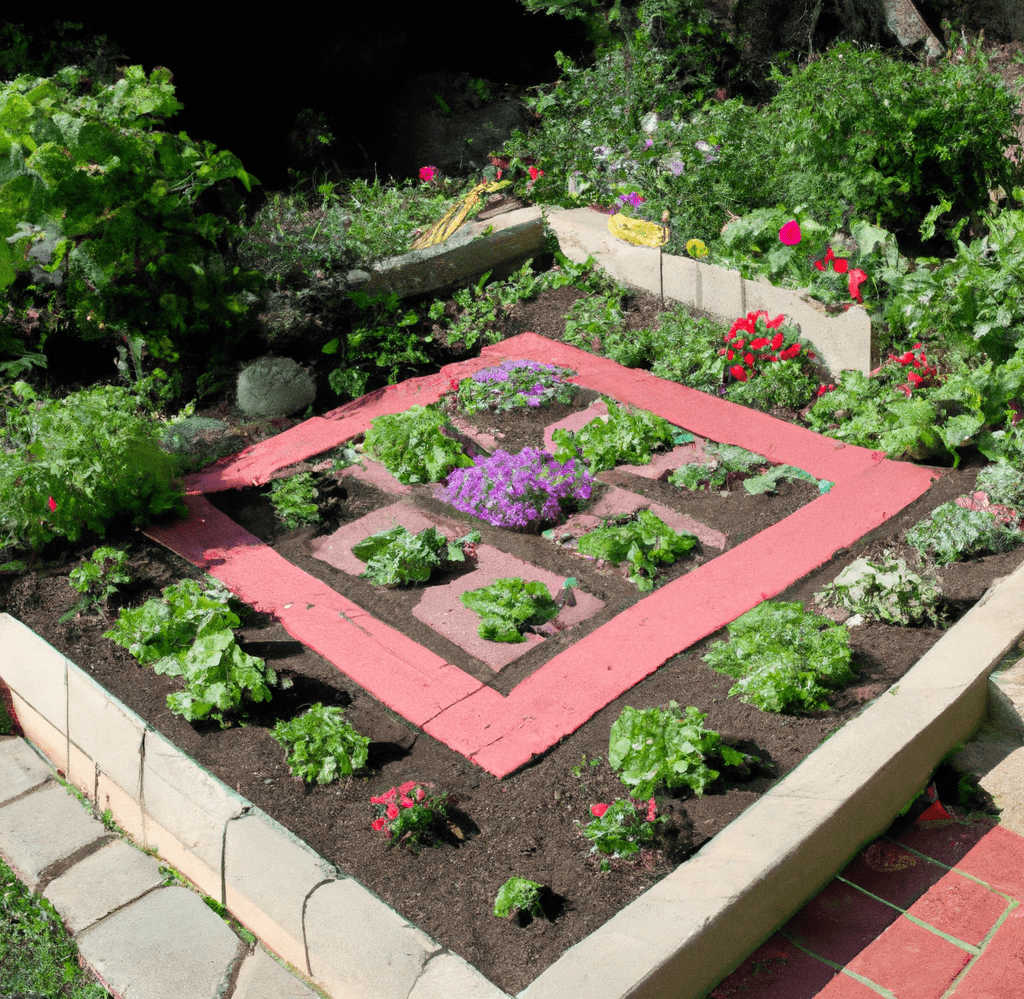
Growing in a Square Foot Garden
To get started with square foot gardening, you’ll need to set up your garden bed. This can be as simple as building a raised bed or using a container with drainage holes. You’ll also need to prepare the soil by adding compost and other organic matter to create a well-draining and nutrient-rich environment for your plants.
Once your garden bed is set up, it’s time to start planting. The key to successful square foot gardening is to carefully plan out your plantings based on the size and spacing requirements of each plant. For example, you might plant 16 lettuce seeds in one square, or four tomato plants in another. Planting a variety of vegetables, herbs, and flowers in each square helps to create a diverse and productive garden.
In addition to choosing the right plants, it’s important to pay attention to watering and fertilizing. Water your plants regularly, but be careful not to overwater as this can lead to root rot. Use organic fertilizers such as compost or vermicompost to nourish your plants, and mulch the soil to help retain moisture and suppress weeds.
Square Foot Gardening: The Benefits
Square foot gardening offers numerous benefits for both beginners and experienced gardeners. It simplifies the gardening process and allows for efficient use of space, making it a great option for those with limited space or time. It’s also an environmentally friendly option, as it requires minimal resources and reduces the need for pesticides and chemical fertilizers. Whether you’re a beginner or an experienced gardener, square foot gardening is a fun and rewarding way to grow your own fresh produce and beautiful flowers.
Understanding the Concept of Square Foot in Gardening
In Square Foot Gardening, the term “square foot” refers to the small, individual squares within a garden bed. Each square is typically one foot by one foot in size, and is used to plant a specific number of plants based on their size and spacing requirements. This allows for a more organized and efficient use of space, as it eliminates the need for traditional rows and helps prevent overcrowding.
The number of plants that can be grown in each square foot depends on the size and spacing requirements of the plants. For example, a square foot may be able to accommodate 16 lettuce seeds, or four tomato plants. Planting a variety of vegetables, herbs, and flowers in each square helps to create a diverse and productive garden.
Square foot gardening is a great option for those new to gardening, as it simplifies the process and allows for easy planning and maintenance. It’s also a good choice for those with limited space, as it can be easily set up in a small backyard or patio. By understanding the concept of square foot and carefully planning your plantings, you can create a thriving and productive garden using the Square Foot Gardening method.
Learning the Basics of Square Foot Gardening
Square Foot Gardening is a great way for beginners to start their gardening journey, as it simplifies the process and allows for efficient use of space. If you’re new to Square Foot Gardening and want to learn the basics, here are some steps to follow:
- Set up your garden bed. This can be as simple as building a raised bed or using a container with drainage holes.
- Prepare the soil. Add compost and other organic matter to create a well-draining and nutrient-rich environment for your plants.
- Plan your plantings. Carefully select the plants you want to grow and determine the number of plants that can fit in each square foot based on their size and spacing requirements.
- Plant your seeds or seedlings. Plant your seeds or seedlings according to the spacing requirements for each plant.
- Water and fertilize regularly. Water your plants regularly, but be careful not to overwater as this can lead to root rot. Use organic fertilizers such as compost or vermicompost to nourish your plants, and mulch the soil to help retain moisture and suppress weeds.
By following these steps, you can get started with Square Foot Gardening and start growing your own fruits, vegetables, herbs, and flowers. Don’t be afraid to experiment and try out different plantings to see what works best for your garden. With a little planning and care, you can create a thriving and productive square foot garden.
The Many Benefits of Gardening
Gardening is a popular hobby that allows people to grow their own fruits, vegetables, herbs, and flowers in their own backyard or patio. It’s a rewarding activity that offers numerous benefits, both for the gardener and the environment. Some of the benefits of gardening include:
- Physical exercise: Gardening requires physical activity, such as digging, weeding, and lifting, which can provide a moderate level of exercise.
- Stress relief: Gardening can be a relaxing and meditative activity, as it allows you to connect with nature and engage in a mindful task.
- Fresh produce: Growing your own fruits and vegetables allows you to enjoy fresh, nutrient-rich produce straight from your garden.
- Connection to nature: Gardening allows you to connect with the natural world and appreciate the beauty of plants and flowers.
- Environmental benefits: Gardening can also have positive impacts on the environment, as it reduces the need for pesticides and chemical fertilizers, and helps to improve soil health.
Whether you’re interested in Square Foot Gardening or traditional gardening, there are many benefits to be gained from growing your own plants. Whether it’s for the physical exercise, stress relief, or connection to nature, gardening is a rewarding and fulfilling hobby that anyone can enjoy.
The Benefits of Square Foot Gardening
Square Foot Gardening is a method of growing plants in small, highly organized beds, typically in a 4×4 foot area. It’s a great way for beginners to start their gardening journey, as it simplifies the process and allows for efficient use of space. Here are some of the benefits of Square Foot Gardening:
- Simplified process: Square Foot Gardening simplifies the gardening process by dividing the garden bed into small squares and planting a specific number of plants in each square based on their size and spacing requirements. This allows for easy planning and maintenance.
- Efficient use of space: Square Foot Gardening allows for efficient use of space, as it eliminates the need for traditional rows and helps prevent overcrowding. It’s a great option for those with limited space, as it can be easily set up in a small backyard or patio.
- Environmentally friendly: Square Foot Gardening is also an environmentally friendly option, as it requires minimal resources and reduces the need for pesticides and chemical fertilizers. The raised beds allow for better soil drainage and warmer soil temperatures, which can lead to healthier plants.
- Accessibility: Square Foot Gardening is also a good choice for those with mobility issues, as the raised beds can be easily accessed from all sides.
Whether you’re a beginner or an experienced gardener, Square Foot Gardening is a fun and rewarding way to grow your own fresh produce and beautiful flowers. With its simplified process and numerous benefits, it’s a great option for anyone looking to start their own garden.
The Art of Planting in Square Foot Gardening
In Square Foot Gardening, planting is an essential part of the process. It involves selecting the plants you want to grow, determining the number of plants that can fit in each square foot based on their size and spacing requirements, and planting the seeds or seedlings according to those requirements. Here are some tips for planting in a Square Foot Garden:
- Choose the right plants: Consider the climate, soil conditions, and sunlight availability in your area when selecting plants for your Square Foot Garden. Choose plants that are well-suited to these conditions and that you will enjoy growing and eating.
- Plan your plantings: Carefully plan out your plantings based on the size and spacing requirements of each plant. For example, you might plant 16 lettuce seeds in one square, or four tomato plants in another. Planting a variety of vegetables, herbs, and flowers in each square helps to create a diverse and productive garden.
- Plant seeds or seedlings: Once you’ve planned your plantings, it’s time to plant your seeds or seedlings. Plant them according to the spacing requirements for each plant, and be sure to water them well after planting.
- Prepare the soil: Before planting, be sure to prepare the soil by adding compost and other organic matter to create a well-draining and nutrient-rich environment for your plants.
By following these tips, you can successfully plant your Square Foot Garden and start growing your own fresh produce and beautiful flowers. Remember to pay attention to watering and fertilizing as well, and be sure to mulch the soil to help retain moisture and suppress weeds. With a little planning and care, your Square Foot Garden will thrive and be a source of joy and nourishment.
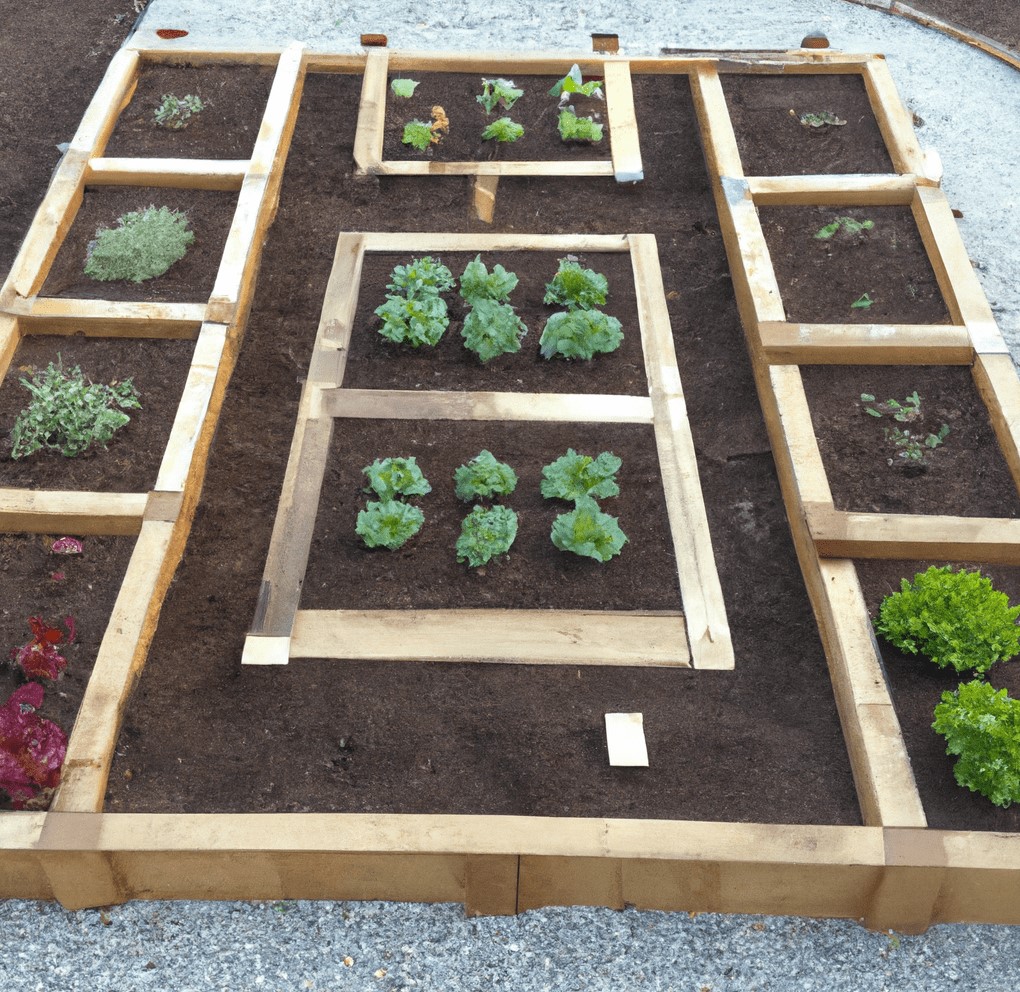
The Role of Seeds in Gardening
Seeds are a crucial element in the gardening process, as they provide the foundation for growing a variety of plants. Whether you’re using seeds or seedlings in your garden, it’s important to understand the role they play in the planting process. When it comes to planting seeds in a garden, there are a few key things to consider:
- Timing: It’s important to plant seeds at the right time of year, based on the climate and soil conditions in your area. Some seeds need to be planted early in the spring, while others can be planted later in the summer.
- Soil preparation: Proper soil preparation is crucial for successful seed planting. Make sure to add compost and other organic matter to create a well-draining and nutrient-rich environment for your seeds.
- Planting depth: Each type of seed has its own planting depth requirements. Be sure to plant your seeds at the recommended depth, and water them well after planting.
- Grid system: Some gardeners use a grid system to help with seed planting. This involves dividing the garden bed into a grid of squares, and planting a specific number of seeds in each square based on the seed’s size and spacing requirements. This allows for a more organized and efficient use of space.
Seedlings, on the other hand, are young plants that have already been started from seeds and are ready to be transplanted into a garden bed. They can be a good option for those who want to get a head start on their gardening season, or for those who have difficulty growing seeds from scratch. However, it’s important to handle seedlings carefully, as they are more delicate than mature plants.
Whether you’re using seeds or seedlings in your garden, it’s important to carefully plan your plantings and pay attention to the specific requirements of each type of plant. With a little planning and care, you can successfully grow a variety of plants from seeds and seedlings, and enjoy the fruits (or vegetables) of your labor.
Bottom Line: Square Foot Gardening is Great for Beginners
Square Foot Gardening is a method of growing plants in small, highly organized beds, typically in a 4×4 foot area. It’s a great way for beginners to start their gardening journey, as it simplifies the process and allows for efficient use of space. Square Foot Gardening is also an environmentally friendly option, as it requires minimal resources and reduces the need for pesticides and chemical fertilizers. It’s a fun and rewarding way to grow your own fresh produce and beautiful flowers.
If you’re interested in square foot gardening, you may also be interested in permaculture gardening and straw bale gardening.


